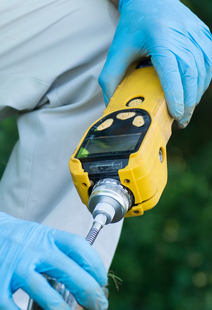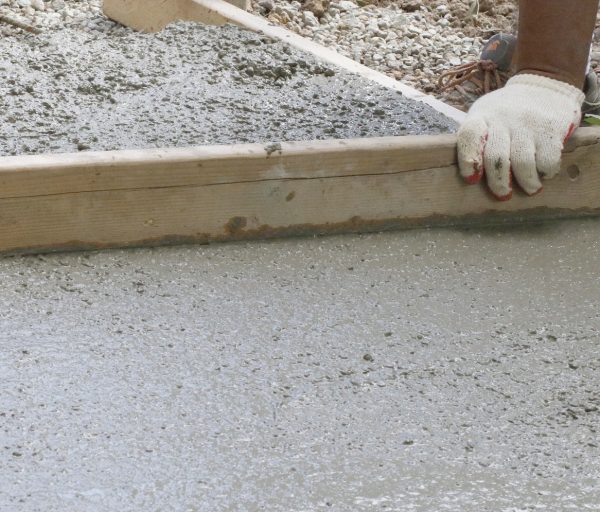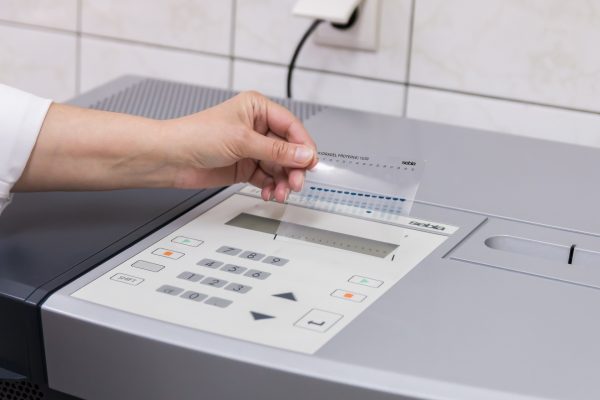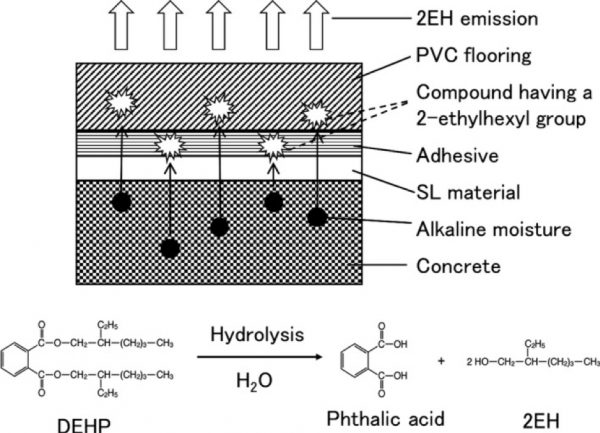SBS Causes Headache for New-Build Occupants
21st October 2022
Geoenvironmental • Specialist Services
Our Client

Preliminary-Assessment
 Based on a site visit, a phased investigation scheme was adopted. Firstly, a Photo-ionisation Detector (PID) survey, used to detect Volatile Organic Compounds, was undertaken. This identified slightly elevated PID readings generally within the property, but increased in the kitchen, especially under cupboards, where the flooring finished and only screed/concrete was present. Gas Box analysis did not indicate any abnormal bulk gases, including carbon dioxide, methane, hydrogen sulphide or carbon monoxide.
Based on a site visit, a phased investigation scheme was adopted. Firstly, a Photo-ionisation Detector (PID) survey, used to detect Volatile Organic Compounds, was undertaken. This identified slightly elevated PID readings generally within the property, but increased in the kitchen, especially under cupboards, where the flooring finished and only screed/concrete was present. Gas Box analysis did not indicate any abnormal bulk gases, including carbon dioxide, methane, hydrogen sulphide or carbon monoxide.
Our Challenge
Research conducted by the Health & Safety Executive in 1992, that looked at the causes and solutions surrounding Sick Building Syndrome, estimated the cost to the British economy ran into £millions thanks to illness, absenteeism, lost productivity and performance.
SBS is a phenomenon whereby people experience a range of clinical symptoms when in certain buildings. Buildings can be commercial or residential, although SBS is most prevalent in office buildings. Symptoms can include eye irritation, nauseous odours, blocked or runny nose, sore throat, skin irritation, headache and lethargy. They seem to disappear within hours or days after leaving the building. A report by the World Health Organisation determined that as much as 30 percent of new and re-modelled buildings around the world cause SBS symptoms.
The Ground & Water Approach
 Further analysis was undertaken using a Protometer and Hygrometer to check moisture levels in the screed/concrete. This indicated that parts of the screed laid still had excess moisture at levels which dry screed should not have.
Further analysis was undertaken using a Protometer and Hygrometer to check moisture levels in the screed/concrete. This indicated that parts of the screed laid still had excess moisture at levels which dry screed should not have.
On a particularly “smelly” occasion further Gas Canister analysis was undertaken. The lab was able to breakdown further chemical signatures, revealing a compound called 2-Ethyl-1-Hexanol in the air and concentrations over the odour threshold. In addition, the descriptor of the anticipated smell wasn’t too far off “heavy, earthy and slightly floral”.
 Research into the compound revealed that 2-Ethyl-1-Hexanol is a plasticiser commonly found to be responsible for SBS. Its mechanism for release comprised compounds having 2-ethylhexyl groups contained in the floor materials and adhesives being hydrolysed by the alkaline moisture content of the concrete.
Research into the compound revealed that 2-Ethyl-1-Hexanol is a plasticiser commonly found to be responsible for SBS. Its mechanism for release comprised compounds having 2-ethylhexyl groups contained in the floor materials and adhesives being hydrolysed by the alkaline moisture content of the concrete.

The Outcome
Happy new building owners and hopefully happy builders too; as a long running issue has been solved and lessons were learnt to avoid the problem in the future.
If you suspect something physical is causing a SBS headache in your home or office, contact Ground and Water to help identify it.
